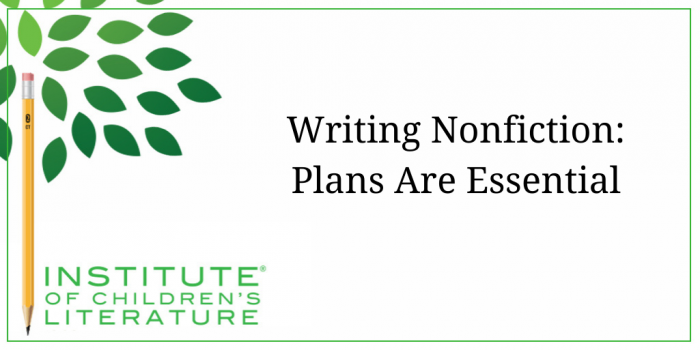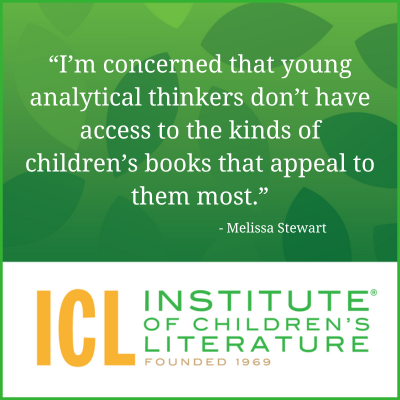1000 N. West Street #1200, Wilmington, DE 19801
© 2024 Direct Learning Systems, Inc. All rights reserved.

Many fiction writers enjoy a very organic approach to fiction. They simply sit down, begin writing, and let the story take them wherever it likes. There are pluses and minuses to this approach, but it works so well for some fiction writers that they’re rather scornful of any approach that involves planning.
Unfortunately, writing by the seat of your pants rarely works for nonfiction. It’s not completely without value as it will allow you to see how your brain chains the information together as it pours it out, but it’s always going to need extra steps where you look again at the material, find the organization that works for it, and rewrite. As a method of seeing how you subconsciously are linking the ideas, that organic let-it-flow writing will show you some things, but it will never result in a piece of nonfiction that doesn’t need serious work because one of the key needs of nonfiction is clear organization.
 Clarity First
Clarity FirstThe whole point of nonfiction is to convey important information. Narrative nonfiction does this even though the structure employed more mirrors the way fiction is built, with actions and consequences moving the reader through a fairly chronological flow. But though you’re telling a story of sorts in narrative nonfiction, it’s always going to be an informationally valuable story and it’s going to have strong purpose and point. There will be more to it than entertainment. There will be something clear and specific that the reader needs to take away, and that will color every choice you make in the writing.
When the piece you are writing isn’t narrative, the role of organization becomes even more important because the value to the reader will be the clear, engaging way you’re conveying information. This is true whether you’re explaining a scientific discovery, a new type of technology, or simply showing the reader how to make a bird out of paper plates. Sometimes the way the piece needs to be organized jumps out at the writer. A piece on how to make a bird out of paper plates doesn’t require a lot of thought about organization, because it’s obvious. First you’ll need to help the reader gather needed supplies, which is usually done through a “things you need” list. Then you’ll guide the reader step-by-step through the actions the reader will need to perform to result in a bird at the end.
This kind of procedural organization is used in virtually all how-to pieces including activities, crafts, and recipes. Imagine trying to follow a recipe that doesn’t begin by telling you what you’ll need. Think about how frustrated you’d be if they spring an ingredient on you halfway through the process, something you don’t have on hand. Or think of how difficult it would be to make that paper plate bird if the instructions were mixed up and given out of the order the reader would need to perform them. Without organization, clarity would be lost and frustration would build in the reader. The writer would have failed in the task.
No matter what topic you’re writing about or what format you’re writing in (magazine article, picture book, longer book), you will always be making choices about what to include and what to leave out. Even a topic that may seem self-limiting like caterpillars, could fill volumes of academic works without ever repeating information. So within a general topic, you will always need to decide on your focus. The focus fill help you know how to approach and organize your information. And your focus will always limit the topic to specific things that connect.

I could look at the mechanism by which they change color, but it’s fairly complicated and difficult to make work for elementary-aged children. I could look at camouflage, in general, and how much more successful animals that can change color are at hiding from predators. But I didn’t want a more general topic, I wanted these specific caterpillars. Then I discovered a research study that looked at whether these caterpillars needed to see to change color. That was very interesting to me. It seemed obvious. They have to see to know what color to change, right?
Wrong. The study proved that you could blindfold the caterpillars, and they’d still change color very accurately. So that study became the focus on the article. Once I decided on that, I had to decide what things about this little caterpillar would connect to the core focus (do they change color because of sight), and that took a little brainstorming.
For the caterpillar article, I knew the reader would need some background information. I had to be certain they understood animal camouflage and what it was. And I needed to make certain they knew the very basics of camouflage for these caterpillars — that they could change a vast range of color but did it really slowly. These background sorts of things would need to go high in the article because they are what the reader needs to know for everything else to make sense. This is your first sorting step, any knowledge that must be held for the rest to make sense will come early (usually right after the eye catching hook).
After that, the rest of the piece was fairly easy. I simply walked the reader through the experiment itself so the organization was procedural, much like a how-to (though this was more of a how-it-was-done). At each step in the procedural, I examined my research to decide what needed to be said. Scientific studies have a lot of data in them, and numbers, but readers aren’t always big fans of raw data, so if they didn’t need to know it, I didn’t share it. Instead, I focused on what this data showed instead of the data itself. I also didn’t focus on how the scientists designed the study. A book on how researchers design studies could be really interesting but it’s a different focus than the one I was using for this piece.
This organization process is very much like the process of going through your stuff and deciding what to keep and what to discard. Will this information interest and delight the reader? If not, out it goes. Will this information connect clearly and smoothly with my focus? If not, out if goes. In any nonfiction writing process, if you look at the information/research you’ve collected and it seems too sparse to make a good article you need to either continue researching or choose a different topic/focus. Never simply throw in extra stuff to pad out the piece. Every single decision about including information needs to be purposeful both for the focus and for the reader.
As an old-school writer, I’m really fond of old-school systems. And I’m also very visual, so that plays into my choice as well. What I like to do for the planning of my organization is to use index cards (or sometimes, index cards cut into thirds). I put all my data on the cards in a kind of shorthand (I include a specific fact and a number on each card. The number corresponds to the system I use for collecting the information in files on my computer. Every different source has a number, or sometimes several numbers to take me to subtopics that I’ve collected from the same source. Once I have all these cards, I begin laying them out on my table, looking for the best way they work together smoothly.

Once I have all of this in front of me in ways that make clear sense to me, I’ll pull out more cards and write transition sentences on them. These sentences move the reader smoothly from one clump of information to the next. So if I have a clump of cards that all connect by being about how the scientists created a test environment that would allow them to see the caterpillars change color. Then the next clump is about how the scientists then blindfolded the caterpillars and retested them, the obvious transition sentence will say something like, “Once the scientists knew this created environment worked, they needed to blindfold some caterpillars.”
Transitions are important to help the reader maintain understanding when moving from one clump of information to the next, and editors often mention issues with smooth transitions when they talk about nonfiction they reject. Transitions also serve a purpose for you as writer as they are another test of whether you’ve collected information that works well together, If you cannot imagine a way to smoothly transition from one clump of information to another, you need to examine your overall focus and organization to see why this clump doesn’t want to work smoothly with the rest. Never simply try to skip a transition, hoping it won’t matter. It nearly always matters.
In nonfiction books and nonfiction articles, headings and subheadings can also work to keep the reader oriented through the organizational process. Not only that, they make it easier for readers to use a nonfiction work as a source for report writing since your headings and subheadings will make finding needed information easier. One of the nice things about headings and subheadings is that they are usually not included in your word count, so you use them liberally without worrying that they’ll push your word count over.

Whatever method you use to plan the organization of your nonfiction, it’s good if it works for you. So if you love very academic looking outlines, that’s great. If you like writing your facts on bits of card and dealing them out on a table so you can push and prod them into place, that’s great too. If you like free-writing and seeing what connections your subconscious makes as you do it, that’s great too as long as you’re ready for the rewriting that comes next as you find that organization and flow for the final piece.
There will always need to be a step where you can clearly relate the organization of the piece, because if you don’t find that step, your final result will not have the clear organization it will need in order to sell. But don’t be afraid to experiment with different methods to get there. Over time, every writer develops what works best in their specific case. You can too.
With over 100 books in publication, Jan Fields writes both chapter books for children and mystery novels for adults. She’s also known for a variety of experiences teaching writing, from one session SCBWI events to lengthier Highlights Foundation workshops to these blog posts for the Institute of Children’s Literature. As a former ICL instructor, Jan enjoys equipping writers for success in whatever way she can.
1000 N. West Street #1200, Wilmington, DE 19801
© 2024 Direct Learning Systems, Inc. All rights reserved.
1000 N. West Street #1200, Wilmington, DE 19801
© 2024 Direct Learning Systems, Inc. All rights reserved.
1000 N. West Street #1200, Wilmington, DE 19801
© 2024 Direct Learning Systems, Inc. All rights reserved.
1000 N. West Street #1200, Wilmington, DE 19801
© 2025 Direct Learning Systems, Inc. All rights reserved.
1000 N. West Street #1200, Wilmington, DE 19801
©2025 Direct Learning Systems, Inc. All rights reserved. Privacy Policy.
2 Comments